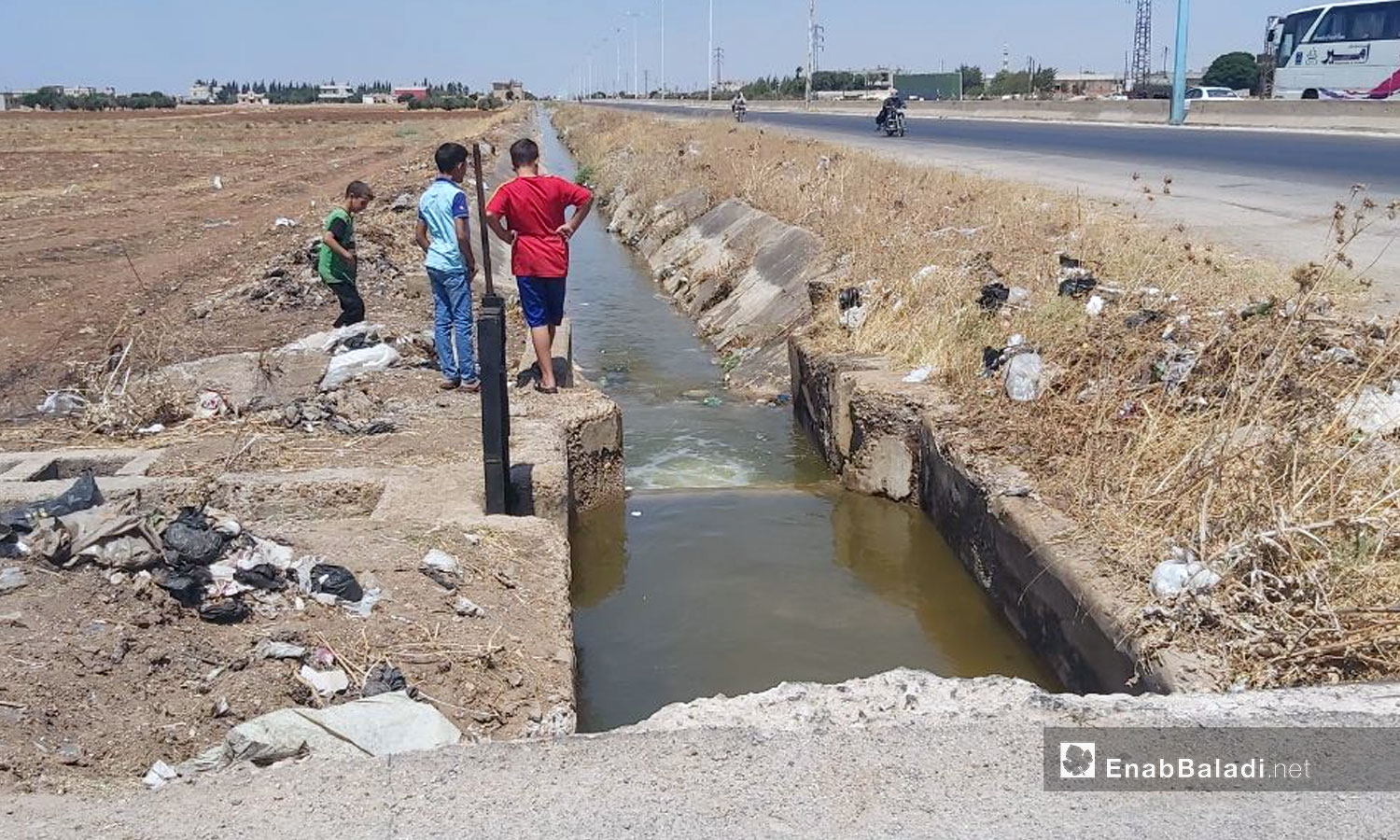



Homs – Orwah al-Mundhir
“I have lost a lot of money in the previous years because I could not invest in my agricultural land well due to the lack of irrigation water, which prompted me to move to the foodstuff trade and land leasing.”
Muhammad al-Khalil, a farmer from the plain of al-Farhaniya village in the northern countryside of Homs, talked about his suffering to Enab Baladi. Al-Khalil owns agricultural land in the region, but he decided to pursue another profession after losing hope that irrigation water would be available to water his land.
However, al-Khalil is considering returning to farming if the water is re-pumped typically, but not for a trial period.
The irrigation water was re-pumped in the canals of the northern countryside of Homs for an initial “trial” period of less than a month, after nine years of interruption to water supply as a result of the ongoing battles in the area, which caused damage to the main channel that passes through the neighborhoods of Homs countryside, from the primary source, the Lake Homs Dam.
As a result of the cut off water from their lands, farmers were forced to move to rain-fed agriculture that depends on rainwater, causing massive losses. Thus, agriculture has become an investment without a guaranteed profit for many farmers who were forced to sell their crops at below cost prices.
Farmer Hassan al-Abdullah (a pseudonym for security necessity), from Talbiseh city, said that the water cuts caused the water level in wells to be lowered, and also led to power cuts, which consequently caused an increase in the costs of pumping water from wells using “diesel” generators. As a result, farmers moved away from planting irrigated crops.
Nasser Ezz El-Din, an agricultural engineer from Rastan, told Enab Baladi that Homs countryside lost its tree cover by 80 percent. The interruption of irrigation water reduced the groundwater level by more than 70 meters, which increased the cost of extracting it.
Ezz El-Din added that the siege of the region and its isolation from its surroundings resulted in farmers’ inability to sell their agricultural products during 2013 and 2014. Farmers also experienced heavy losses before the opening of the region’s local “al-Hal” market, which prompted them to uproot trees and sell them in the wood market.
Youssef Abdel Salam, a farmer in Talbiseh city, is optimistic about the return of water pumping. He said that “With the return of water pumping, we began actually to think about returning to planting and caring for trees, and we began preparing to return to irrigate crops that had not been planted for almost ten years.”
Farmers in the northern countryside of Homs mainly depend on fruit trees, such as peaches, plums, and apricots, but the interruption of irrigation water has forced some farmers to cut their trees for firewood and sell them.
The return of water to agricultural lands in the northern countryside of Homs caused an increase in the land lease prices. A land lease also called a ground lease, is a lease agreement that permits the tenant to use a piece of land owned by the landlord in exchange for rent.
Some owners of agricultural lands decided to lease their lands because the water was cut off, and they lost hope in making profits from their lands, while others preferred to invest in their lands.
An agricultural engineer from Talbiseh, who refused to be named for security reasons, told Enab Baladi, “After I was dismissed from my job because I had been detained for several months, I had no choice but to work in agriculture. Therefore, I started investing in my land and then expanded my portfolio by renting additional grounds this year. The leasing prices have grown dramatically with the return of water experimentally to the area since last August.
He mentioned that the cost of leasing a land increased from 20 thousand Syrian Pounds (8.8 USD) per dunum in 2019 to 40 thousand SYP (17.6 USD) per dunum in the current year.
He pointed out that the wages of land plowing have increased, as, with the return of the demand for investment in the agricultural sector, the price of a dunum has increased by a third, indicating that the return of water will constitute a positive turning point on the financial level for the farmers who make up more than a third of the population in the region.
The Director of Water Resources in Homs, Ismail Ismail, said on 10 August that the water was released towards the parts that were rehabilitated completely, and it would be released in succession when the rest of the channels are ready, as reported by the official Syrian News Agency (SANA), a Syrian state-controlled news agency.
Ismail explained that this network irrigates about 11 thousand hectares in the northern countryside of Homs and Talbiseh and Rastan and about 20 other villages, which contributes to the revival of agricultural lands in the area, which in turn constitute a food basket for Homs Governorate.
if you think the article contain wrong information or you have additional details Send Correction